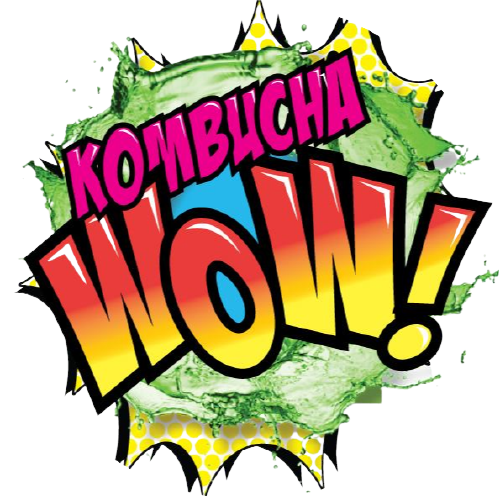Fizzy Kombucha Tips From a Thailand Kombucha Brewery Owner
By now, you probably already know all about kombucha's health effects and how it's great for your gut health and all that, but now you might be thinking, "how do I get my OWN kombucha to be sparkling and get those bubbles like how they do in store-brought kombucha? I want to get perfect fizzy kombucha! Well, as a Thailand kombucha brewery Owner, I wanted to write an article that helps you achieve that - every time! Here goes..
How To Get Perfect Bubbles In Kombucha
Well, the answer is that you CAN get those great bubbles in your own batches of your own kombucha - IF you know what causes them in the first place - and by the end of this article, you will know how to get them each and every time. Here at KombuchaWOW! in Phuket, we make over 2000L a week of our sparkling, raw booch at our Thailand kombucha brewery, so we know a few things about getting bubbles!First, let's do some quick science:
Remember that in kombucha, the yeast (the Y in SCOBY) likes to eat the sugar we add into the first ferment (F1). Once the yeast has has metabolised (science word for "digested") the sugar in F1, then it's by-product (fancy term for "poop'), is carbon-dioxide (CO2) and alcohol. So now the bacteria (the B in SCOBY) then metabolises the alcohol and it's by-products are all the beneficial acids such as acetic acid (this one makes the vinegar sour taste in kombucha), along with gluconic and glucuronic acids too.
Following so far?
Trust me, there's a reason we recapped on the science part of kombucha fermentation, as it's going to help you in the next part of this article.
Thailand Kombucha Brewing 101
OK, so now at this point in the fermentation cycle, you've chose not to drink your booch flat, and you want those sweet sweet bubbles in there for an ever better booch experience.Well, remember the science part where I told you about how the F1 yeast produces carbon dioxide as one of it's by-products? It's this CO2 that gives you the bubbles. And it's ONLY a sugar source that will allow them to ferment to produce this CO2.
So if you were to take your raw F1 kombucha and put in an airtight bottle, then depending on how much residual leftover sugar that was in the F1, that will be fermented again over a few days to a few weeks while it's in the bottle and produce those CO2 bubbles of goodness!
I've tried this but it didn't work - my kombucha was flat!
Usually when there are no bubbles, it's common for people to have brewed their kombucha for around 3 weeks therefore fermenting most of the sugar out in F1. This means there's very little for the yeast to feed on and ferment out anymore CO2, so they'll end up with sad and flat kombucha instead.The trick then, is to add a sugar source for the yeast to metabolise, therefore creating in-bottle carbonation for you to enjoy.

In any case of you using just sugar or sugar with fruit, or just fruit on its own - make sure you have a bottle that is able to withstand the strong pressures of carbonation. We absolutely hate plastic, but as a home brewer that's just starting out, it's going to be fine to choose soft drink 1L plastic bottles to do your 2F in, at room temperature for up to a week. You'll see the walls of the bottle getting harder and bulging every so slightly, so it's visually easy to see when it's time to drink them and put them in the fridge to slow down the fermentation.
How does KombuchaWOW! make their booch fizzy?
Well, like most large commercial kombucha companies, we add a consistent bubbles experience via our CO2 machines. A lot of people get hung up on this, thinking it's not "pure" kombucha. It is. It's exactly the same kombucha you make at home, just with equipment that allows us to make thousands of litres a week rather than a few gallons per week like you might be making in your kitchen. Plus, the most important part of all this:The alcohol level.
When you add sugar and yeast together; You're going to get alcohol. No if's or buts - this is a natural process and it can't be stopped.
As a home kombucha brewer, you're going to be able to make whatever booch you want, and if that's had 2F done with you adding more sugar or fruit in there and left in a bottle for a week or more? Well, you might very well be drinking a light - heavy beer in terms of the alcohol ABV level!
Now as a commercial kombucha maker here in our Thailand kombucha brewery in Phuket? We can't legally allow an alcohol level of more than 0.5% ABV. So we go to great lengths to make sure our kombucha is lab-tested and always under this 0.5% ABV level. Many kombucha companies in Thailand don't do this - and you can be certain that if you're drinking kombucha in Thailand that has been 2F in bottles, then you'll be basically drinking a beer in terms of the alcohol content.
Final Thoughts!
Just make sure that you add enough priming sugar or some fruit that is hight in fructose (natural fruit sugar) in your bottles before you seal them up for at least 5 days. You will definitely get carbonation and those sweet sweet bubbles as a result of doing this. When people don't get bubbles, it's because they didn't add enough sugar or fruit so the yeast couldn't feed and produce the CO2 bubbles.






